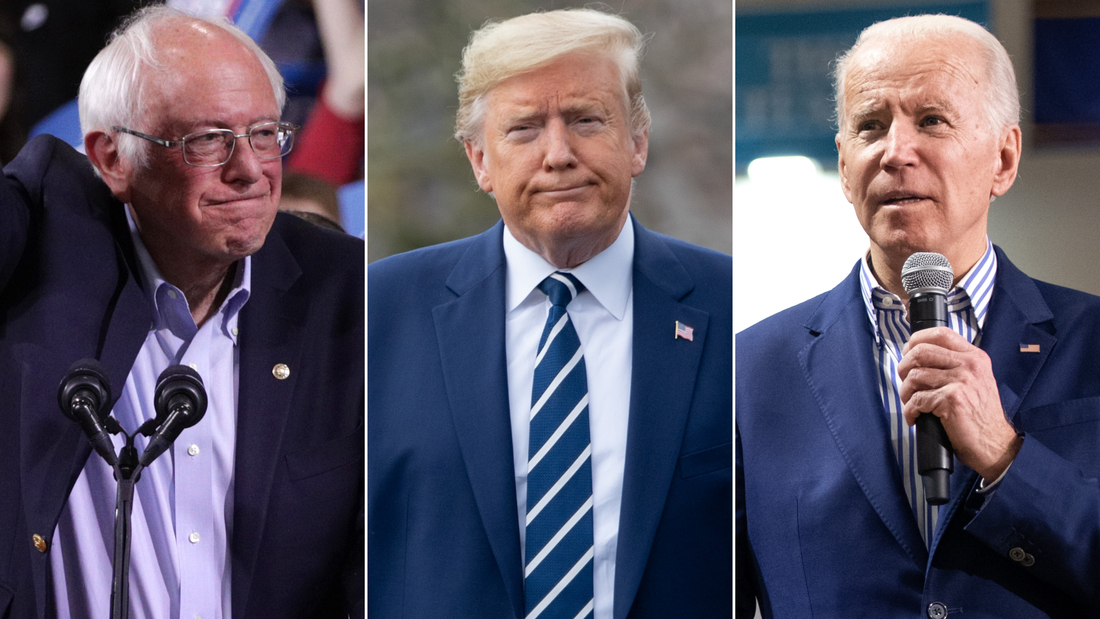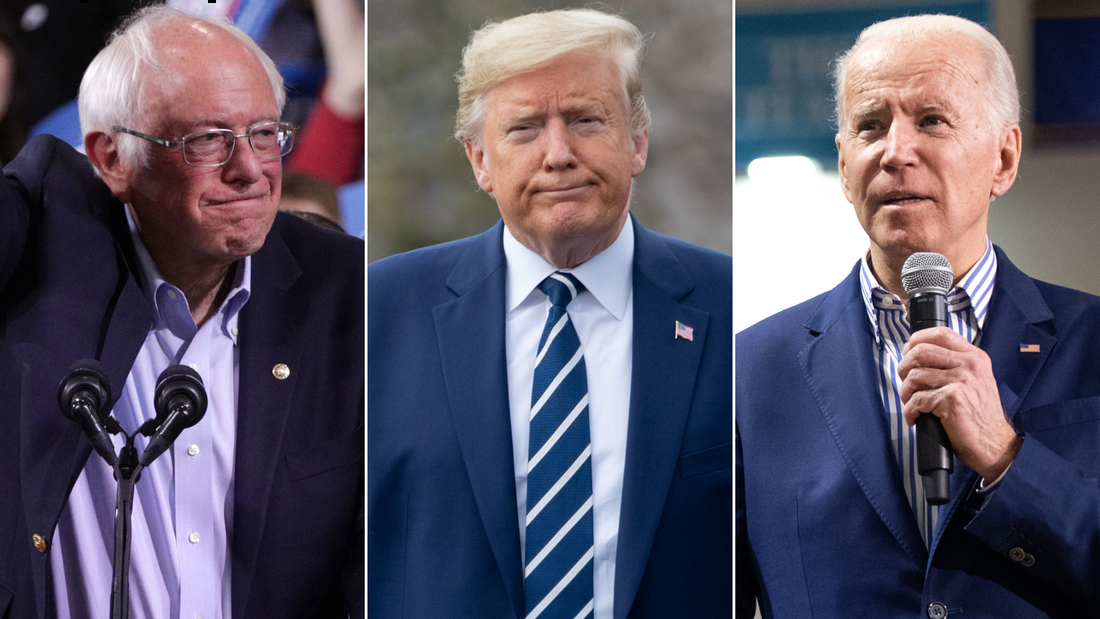[ad_1]

Serious experiments in breaking out of America’s two-party system are thrilling to read about, but they always end the same way — with one of the two main parties defeating the upstart.
If you want to understand why Sanders is still running for the Democratic nomination, look at the presidential election of 1912, when a war between former President Theodore Roosevelt and President William Howard Taft tore the Republican Party apart and put a Democrat — Woodrow Wilson — in the White House.
A larger-than-life politician meets the progressive movement
Roosevelt, the most larger-than-life and dynamic figure in American political history, returned from a years-long safari in Africa to find that his handpicked successor and best friend, Taft, wasn’t doing a very good job.
He’s the war-hungry Rough Rider who also won the Nobel Peace Prize. He called himself a Bull Moose. He was the early-20th-century version of a rock star.
After his two terms as President and his African sojourn, Roosevelt zeroed in on the progressive anti-corporate-monopoly movement that was gripping both Republicans and Democrats at the time. In order to defeat it, he tried to wrest control of the GOP back from Taft.
For context: It would be as if Trump won reelection and retired to Mar-a-Lago after leaving office but then, halfway through Mike Pence’s first term as President, decided Pence wasn’t up to the task. (Back then, before the 22nd Amendment, there were no term limits.)
Roosevelt won the first primaries, but lost the nomination
Americans were only just starting to hold party primaries to give voters a say in who was nominated for president. Roosevelt introduced the concept of direct presidential campaigning that year and racked up a series of wins. Until then, candidates had relied on surrogates to get their messages out to the public and at political conventions.
“He’s promoting the cult of celebrity into politics in a way that has ramifications throughout the 20th century,” said presidential historian Douglas Brinkley.
When Taft blocked Roosevelt at the Republican convention, Roosevelt stormed out and took his supporters with him. He then, three months before Election Day, started a new party and ran on a progressive platform (not unlike democratic socialism) and his own political celebrity. He took ideas from the socialists at the time, borrowing from Eugene Debs, who was also in the race.
And then Roosevelt got shot. It’s bananas.
Republicans split apart and Wilson won
Roosevelt got second in November. Taft got third. Wilson, who ran as a progressive Democrat — but, importantly, as a Democrat — won.
“The bulk of the votes went to the candidates who had the progressive messages — the messages of change. The messages that things needed to be different,” said Margaret O’Mara, a history professor at the University of Washington. “But Wilson wins because the Republican Party is rent in two.”
No third-party candidate has performed close to Roosevelt at the national level since.
Again, that’s part of the reason Sanders is now running for the Democratic nomination. It’s also why Michael Bloomberg, who was elected mayor in New York as a Republican and as an independent, ran for president as a Democrat.
It’s two-party or nothing
In 2016, Bloomberg specifically didn’t run as an independent, even though he had the cash, because he didn’t want to play the spoiler and divert support from Hillary Clinton.
And, regardless of the actual facts, it’s hard to shake the perception that Bill Clinton, who won the White House with just 43% of the popular vote (just like Wilson!), beat George H.W. Bush only because of Ross Perot’s independent bid.
When it appeared that Sanders, whose uncompromising view of government worries many moderates, was ascendant, Bloomberg jumped into the Democratic primary. But nobody was buying it when Howard Schultz, the former Starbucks CEO, tried to mount an independent bid for the White House.
The parties are both too small to give Americans many options and too big to allow anything in between.
If you don’t believe in abortion rights but you do believe climate change is irreparably changing the world, there’s no specific place for you at the national level on Election Day.
If you believe there should be new gun control measures but you don’t want to offer a pathway to citizenship to undocumented immigrants, you’re out of luck.
The Constitution protects the modern system
There are certainly political currents that shift both parties. The disaffection of non-college-educated white men helped elect Trump in 2016 and it also helped bring Sanders to prominence as a Democrat that same year.
Whether Democrats can win in November depends very much on whether progressives excited about Sanders will show up for a moderate like Biden, who doesn’t want to nationalize the US health care system. Or, if Sanders wins the Democratic primary, he’ll have to convince older Americans who grew up afraid of communism that his democratic socialism is something else entirely.
But an important thing for Democrats frustrated by their primary to remember is that the alternative to a Democrat is Trump. That’s why conservative anti-Trump former Rep. Joe Walsh has said he’d even vote for Sanders on Election Day.
The parties themselves are ever-evolving, but it seems pretty clear at the moment that there can only be two and whichever one can cram the most ideas into its tent can make a claim at power until people want to leave the tent.
Add to that the massive diversity — geographic, racial, economic and otherwise — of a country of 350 million people. It’s both not reasonable to think two parties can sufficiently represent the viewpoints of Americans and not possible to imagine where a third party would fit.
[ad_2]
Source link

